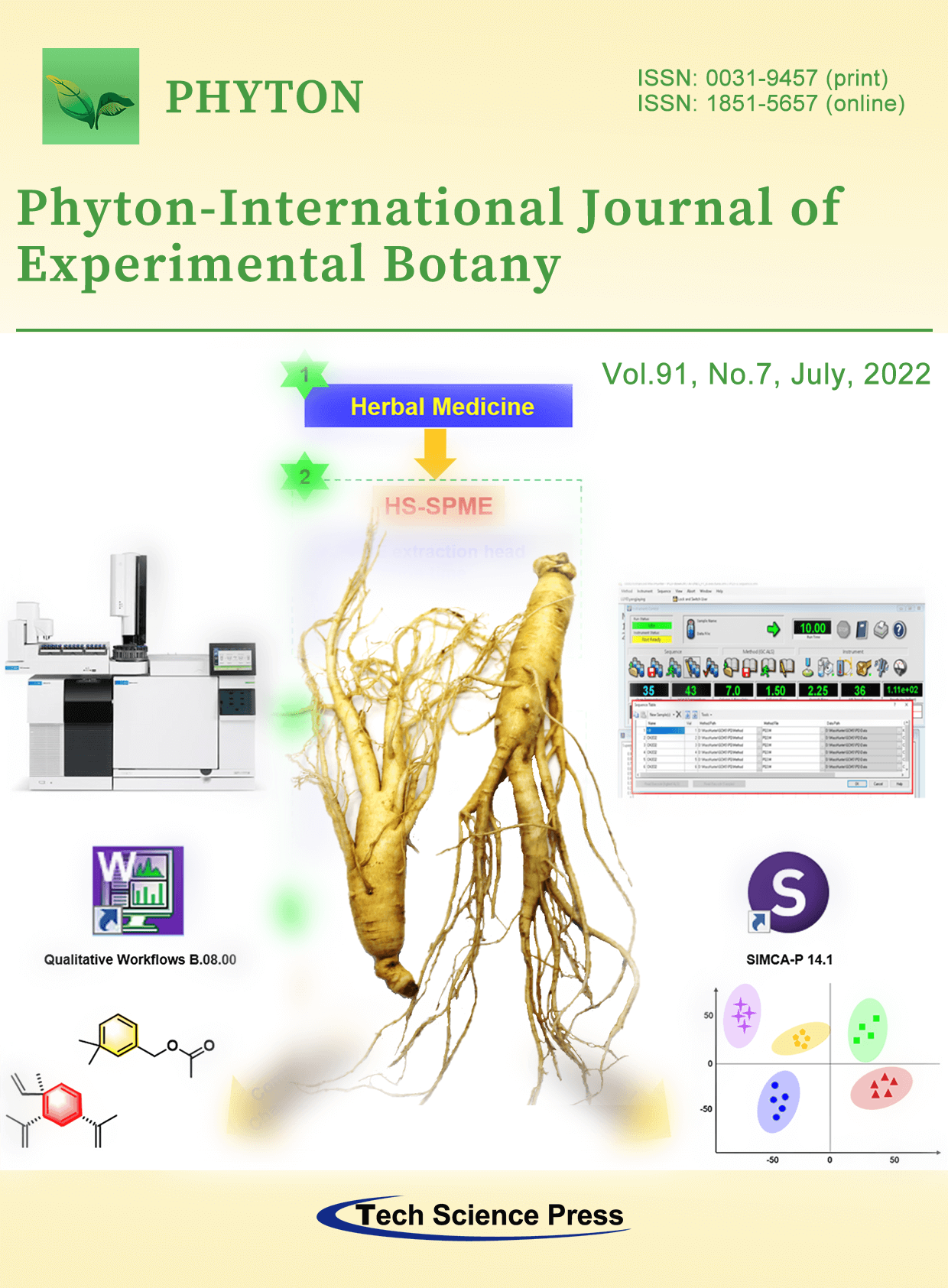Phytohormones Accumulation and Distribution in Shoots and Roots of Haploid, Diploid and Tetraploid Barley Seedlings Derived from Microspore Culture
Longhua Zhou1,2,#, Ting He1,2,#, Jing Li1,2,3, Guimei Guo1,2, Yingbo Li1,2, Hongwei Xu1,2, Runhong Gao1,2, Linli Huang1,2, Yifei Wang1,2, Ruiju Lu1,2, Zhiwei Chen1,2,*, Chenghong Liu1,2,*
Phyton-International Journal of Experimental Botany, Vol.91, No.7, pp. 1419-1428, 2022, DOI:10.32604/phyton.2022.019912
- 14 March 2022
Abstract Phytohormones play important roles in plant growth and development, and polyploids are thought to be an important method for plant breeding. However, the relationship between ploidy and phytohormone is still unclear. In this study, barley at three ploidy levels were produced by microspore culture. Therefore, we further analyzed the phytohormone content in the shoots and roots of the three kinds of barley materials to study the effect of ploidy on phytohormones accumulation and distribution. The results showed that Abscisic acid (ABA), gibberellin (GA), jasmonic acid (JA), auxin (IAA), salicylic acid (SA) and cytokinin (CTK) were More >
